
MAY 2023 • Vol.10 • No.05 (ISSN 2564-2030) 5 ENABLEMENT FEATURES EVERY HR TECH STACK MUST HAVE - Amy Cohn, Chief People Officer, Allego 22 13 27 30 Why Every HR Professional Must Utilize HR Tech Stack - Alana Pratt, BrightHR Canada Payroll Equity: Left Out And Leaving - Jaclyn Margolis, Pepperdine Graziadio Business School ‘Companies Must Ensure Their Pay Practices Are Equitable And Transparent’ Exclusive interview with Olivia Cicchini, Legal Specialist, Peninsula Canada Navigating Pay Equity, Pay Transparency, and Pay Range Disclosure Regulations - Excellence ePublications Team
On the Cover
Articles
10 PTO: Why U.S. Workers Get So Little Vacation Time?
Time off from work is integral to good mental and physical health, sustained productivity, and high performance
- Mairead Walsh, Chief Marketing Officer, Softworks
15 Unlimited PTO: 9 Businesses Share Their Stance Strategies for implementing and managing unlimited PTO policies
- Brett Farmiloe, Founder and CEO, Terkel
24 Digital Transformation: Top 5 Tips For HR

You know digital transformation is important, but how do you implement it?
- Zachary Amos, Editor, ReHack
28 FMLA: How Employers Can Avoid Common Mistakes
Balancing work and health
- David Setzkorn, Senior Vice President, HUB International
5 Enablement
HR Tech Stack Must Have Empowering HR and employees - Amy Cohn, Chief People Officer, Allego 07
Features Every
INDEX HRIS & Payroll Excellence MAY 2023 Vol.10 No.05 (ISSN 2564-2030)
Why Every HR Professional Must Utilize HR Tech Stack


Empowering HR professionals for efficiency and success

- Alana Pratt, HR Advice Specialist, BrightHR Canada
Top Picks 13 22 27
Payroll Equity: Left Out And Leaving
How systematic pay and promotion discrimination against women damages the workplace
- Jaclyn Margolis, Associate Professor, Applied Behavioral Science, Pepperdine Graziadio Business School
Navigating Pay Equity, Pay Transparency, and Pay Range Disclosure Regulations
- Excellence ePublications Team
30
Exclusive interview with Olivia Cicchini, Legal Specialist, Peninsula Canada
‘Companies Must Ensure Their Pay Practices Are Equitable And Transparent’
INDEX
How are our HRIS & Payroll Products and Services helping to make you smarter?
HRIS & Payroll Excellence - Monthly Interactive Learning Journal
This monthly interactive learning experience captures key metrics and actionable items and keeps you focused on your Core HR: Payroll for HR and HRIS management goals and solutions.
HRIS and Payroll Virtual Events
Virtual Events in the HRIS and Payroll program merge human resources management as a discipline with basic HR activities and processes within the information technology field. With continuous offerings of new technologies in the HR industry to improve HR practices and efficiencies in payroll and any information systems, there’s a boundless need for education as well as surveillance of systems integration. Each Virtual Event consists of up to 10 credit webcasts.
HRIS and Payroll Webcasts for Credit
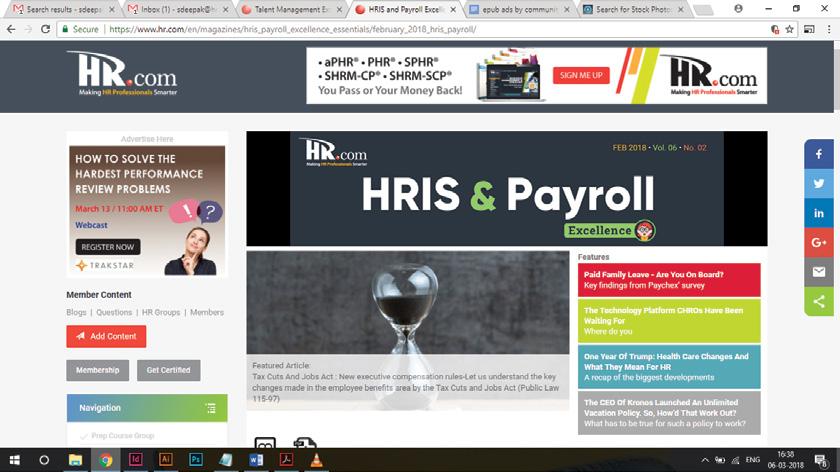
HR.com webcasts deliver the latest HRIS and Payroll industry news, research trends, best practices and case studies directly to your desktop. Webcasts are available live online with a downloadable podcast and a copy of the slides (PDF) available before and after each webcast. Earn all of the required recertification credits for aPHR, PHR, SPHR, GPHR, and SHRM Certifications. HR.com’s one-hour webcasts, in every HR specialty including HRIS and Payroll, are pre-approved for HRCI and SHRM credit (excluding Demo webcasts).
Payroll for HR and HRIS Community
Join over 37,000 HR.com members with a similar interest and focus on Payroll for HR and HRIS. Share content and download research reports, blogs, and articles, network, and “follow” peers and have them “follow” you in a social network platform to communicate regularly and stay on top of the latest updates. This well established Payroll for HR and HRIS Communities are an invaluable resource for any HR professional or manager.

Use these invaluable HRIS & Payroll resources today! For more information phone: 1.877.472.6648 | email: sales@hr.com | www.hr.com
Editorial Purpose
Our mission is to promote personal and professional development based on constructive values, sound ethics, and timeless principles.
Excellence
Debbie
Please
Debbie Mcgrath Publisher, HR.com
Deepa Damodaran Editor, HRIS & Payroll Excellence

Pay Equity, HR Tech, and PTO: What’s in Store for HR in the Future
In today’s fast-paced and technology-driven world, the field of human resources (HR) is undergoing a transformative shift.
The emergence of the human resources technology (HR tech) stack, a collection of interconnected digital tools and software, has revolutionized how HR departments operate within organizations. This powerful blend of HR technology enables professionals to streamline complex processes, automate administrative tasks, and focus on strategic initiatives that drive overall business success. By leveraging the HR tech stack, companies can enhance the employee experience, minimize errors, increase efficiency, and make data-driven decisions.
Check out 5 Enablement Features Every HR Tech Stack Must Have by By Amy Cohn from Allego and Why Every HR Professional Must Utilize HR Tech Stack by Alana Pratt from BrightHR Canada, as they delve into the importance of HR tech stack, explore its benefits, and provide insights on how HR professionals can choose the right tools to optimize their operations and achieve organizational excellence.
Pay equity is a pressing issue in today’s workplaces, with gender discrimination and disparities persisting despite stringent laws and regulations. The recent landmark settlement involving Goldman Sachs, one of the world’s largest investment banks, shed light on the deep-rooted challenges faced by women employees.
In Payroll Equity: Left Out And Leaving, Jaclyn Margolis from Pepperdine Graziadio

Business School explores the factors contributing to pay inequity and the importance of implementing transparent and equitable pay practices. By drawing insights from this high-profile case, we can learn valuable lessons on promoting gender equality and fostering fair compensation systems within organizations.
Read the exclusive interview with Olivia Cicchini, Legal Specialist at Peninsula Canada,
‘Companies Must Ensure Their Pay Practices Are Equitable And Transparent’, where she touches upon what employers must do to maintain compliance with pay and gender equity and how to identify instances of discrimination and promote a culture of equality in the workplace, among others.
Also, read PTO: Why U.S. Workers Get So Little Vacation Time? by Mairead Walsh and Unlimited PTO: 9 Businesses Share Their Stance, by Brett Farmiloe, among others.
We hope this edition of HRIS & Payroll Excellence will help you achieve excellence in your core HR and payroll processes.
Happy Reading!
Disclaimer: The views, information, or opinions expressed in the Excellence ePublications are solely those of the authors and do not necessarily represent those of HR.com and its employees. Under no circumstances shall HR.com or its partners or affiliates be responsible or liable for any indirect or incidental damages arising out of these opinions and content.
EDITOR’S NOTE
Subscribe now for $99 / year And get this magazine delivered to your inbox every month Become a Member Today to get it FREE! SIGN UP OR For Advertising Opportunities, email: sales@hr.com Copyright © 2023 HR.com. No part of this publication may be reproduced or transmitted in any form without written permission from the publisher. Quotations must be credited.
Publications
McGrath CEO, HR.com - Publisher
and
Sue Kelley Director (Product, Marketing,
Research)
Damodaran
and Editors HRIS & Payroll Excellence
Damodaran
Design and Layout (Digital Magazine)
Babitha Balakrishnan and Deepa
Excellence Publications Managers
Deepa
Editor Arun Kumar R
A K Magazine (Online Version)
& Correspondence
Chandra Shekar
Submissions
correspondence,
to the
to
republish, or
articles
send any
articles, letters
editor, and requests
reprint,
excerpt
to ePubEditors@hr.com
HRIS & Payroll Excellence (ISSN 2564-2030) is published monthly by HR.com Limited, 56 Malone Road, Jacksons Point, Ontario L0E 1L0 Internet Address: www.hr.com Write to the Editor at ePubEditors@hr.com
For customer service, or information on products and services, call 1-877-472-6648
In a world of unparalleled challenges (global pandemic, racial injustice, political rivalry, digital 4.0, emotional malaise), uncertainty reigns. Finding opportunity in this context requires harnessing uncertainty and harnessing starts with reliable, valid, timely, and useful information. The Excellence publications are a superb source of such information. The authors provide insights with impact that will guide thought and action.
Rensis Likert Professor, Ross School of Business, University of Michigan Partner, The RBL Group


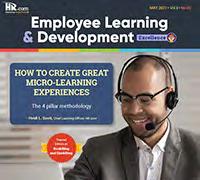
Excellence publications are my ‘go-to’ resource for contemporary and actionable information to improve leadership, engagement, results, and retention. Each edition offers rich and diverse perspectives for improving the employee experience and the workplace in general.




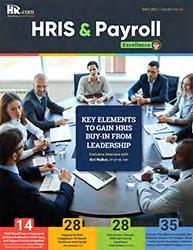
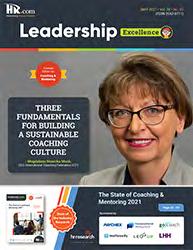
I regularly read and contribute to Leadership Excellence and Talent Management Excellence. I use many of the articles I read to augment my own presentations and I often share the articles with my clients. They are always quick, right on target for the latest issues in my field, and appreciated by my clients. If you want to stay up to date on the latest HR trends, choose a few of the different issues from the Excellence series of publications.
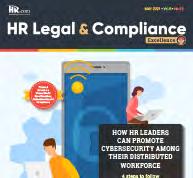


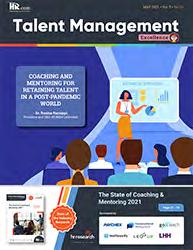

We’re eager to hear your feedback on our magazines. Let us know your thoughts at ePubEditors@hr.com
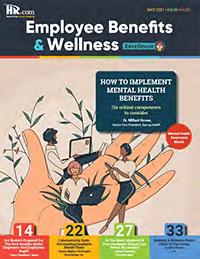
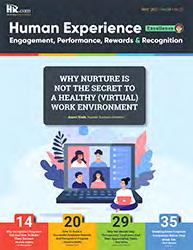 Dave Ulrich
Dave Ulrich
WHY EXCELLENCE PUBLICATIONS?
Julie Winkle Giulioni Author, Virtual /Live Keynote Presenter, Inc.’s Top 100 Leadership Speakers
Dr. Beverly Kaye CEO, BevKaye&Co.
5 Enablement Features Every HR Tech Stack Must Have
Empowering
HR and employees
By Amy Cohn, Allego
The modern workforce is geographically dispersed and on the go. No longer tethered to a desk, employees work on laptops, tablets and smartphones — from anywhere there is a good internet connection. One need only visit their local coffee shop on a Monday morning to see all of the working professionals clicking and tapping away on their devices.
This shift is forcing HR teams to modernize their teaching methods and technology. Effective, agile, streamlined HR tech stacks are imperative for revenue enablement in the new working environment.
HR leaders must be thoughtful when building their HR tech stack, however. Too many tools could overload employees, but too few will not get the job done. While the ideal setup differs for every company, your tech stack must be mobile-friendly, easily accessible and integrated.
Consider these five capabilities carefully as you evaluate your HR technology.

1. Virtual Training
In today’s hybrid environment, businesses cannot survive without virtual training. Key to this is asynchronous communication capabilities, such as video recording.
Incorporating a centralized digital content repository in your tech stack allows employees to find and access training material whenever and wherever they need it. This ease of access and single location enable just-in-time learning. Instead of a new hire having to remember client call protocols from their first week of onboarding, they can review relevant materials right before their first call.
HRIS & Payroll Excellence presented by HR.com MAY 2023 7 Submit Your Articles
COVER ARTICLE
Virtual training also improves onboarding experiences and facilitates continuous learning to build a strong and empowered workforce.

2. Digestible Content
Your digital training content must be succinct and easily digestible. Traditional training course formats require significant time from both creators and learners. With today’s quickly evolving business landscape and already-overloaded schedules, maintaining these types of learning modules is not sustainable. Additionally, employees need more than one-time training to truly advance their skills, and they can not just dip into an hours-long course for a refresher.
An effective tech stack should enable you to create bite-sized content. These shorter materials fit into a busy schedule and are easier to absorb. An added benefit: shorter content is simpler to develop and maintain.
Your tools should also allow you to quickly and efficiently generate new material for distribution to keep your employees updated on continuously changing products, competitors, technology and processes.
3. Collaboration
No one works in isolation, even when they are remote. Your stack needs collaboration capabilities, including:
● Communication: With employees located in
many places, you need a communication tool to allow teams to connect and share ideas and experiences. This setup also promotes coaching opportunities.
● Content: You need to be able to pull in your subject matter experts to generate content. They have extensive experience and in-depth knowledge. Capturing their perspectives in recordings and documents ensures the valuable information is not lost if they leave the company. Employees also find this peer-driven content more engaging than theoretical classroom learning.
HRIS & Payroll Excellence presented by HR.com MAY 2023 8 Submit Your Articles 5 Enablement Features Every HR Tech Stack Must Have
Communication tools build connections and a sense of community while also helping teams align messaging and share industry developments, customer insights and other information.
4. Performance Management
The training platform you select must measure and monitor employee success, providing easy-to-understand metrics. For
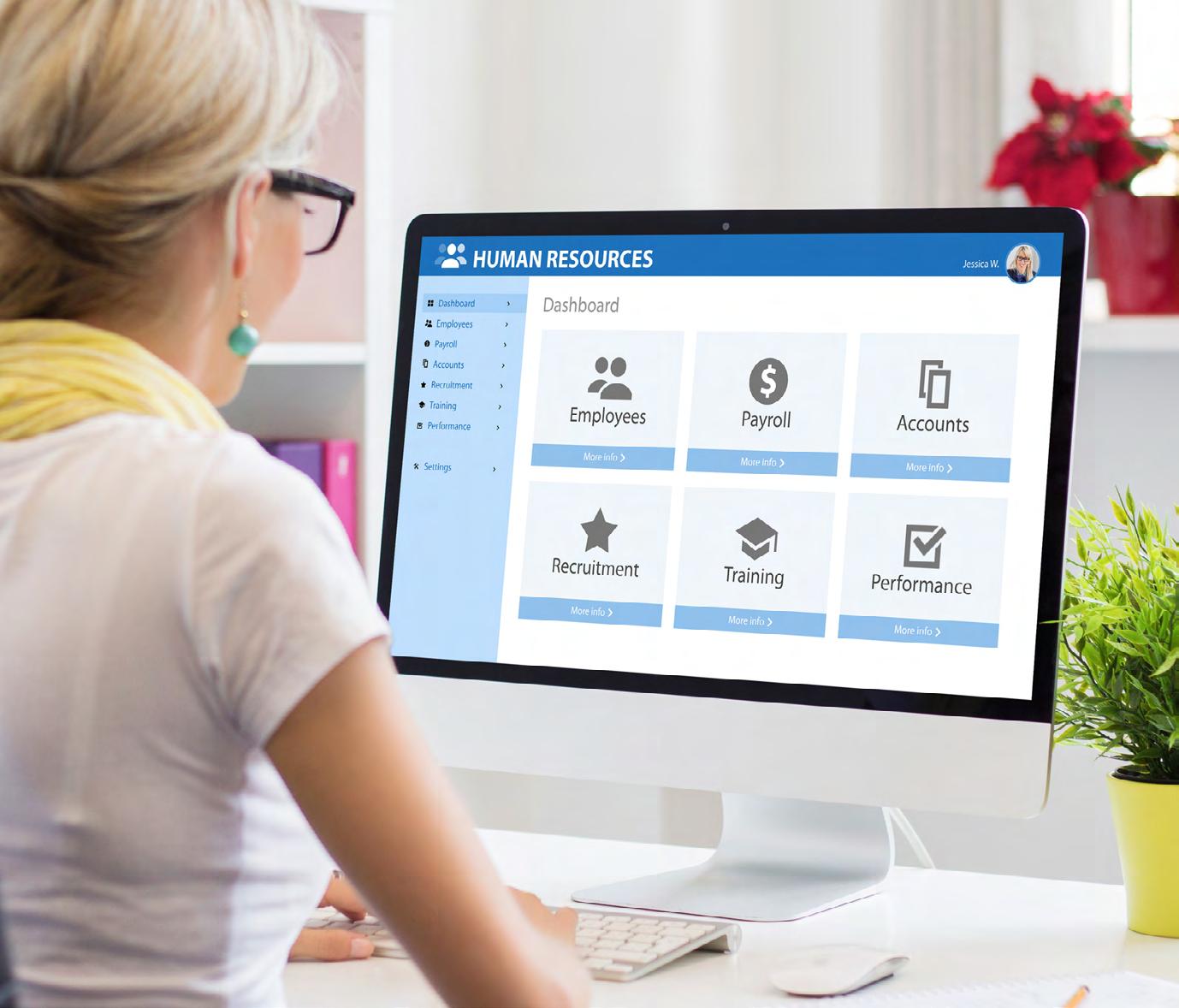
example, you want to track and measure training effectiveness, such as course completion rates, employee competency and knowledge mastery. You can use this information to improve your training processes and meet specific employee needs.
5. Integration
The fewer HR tools you have and the more you can integrate
them, the better. That is because switching between multiple tools slows employee productivity and reduces satisfaction. In fact, studies in psychology and neuroscience show that context-switching (which occurs when you jump between programs) is mentally taxing; increasing stress and disrupting focus. The average employee toggles between different apps and websites nearly 1,200 times daily. Each switch takes about two seconds, totaling four hours a week wasted on context-switching alone.
So, when you incorporate training material into a program already built into workflows, employees are more efficient and more likely to use it.
The biggest takeaway: No matter how you build your HR tech stack, it must support revenue enablement by empowering your employees to learn and grow. The features required to develop your workforce are wildly different from just a few years ago. Evaluate your workforce’s needs and preferences as you evaluate your options.

Amy Cohn is the Chief People Officer at Allego. Amy oversees the strategic development and execution of HR initiatives, including talent management, leadership development and DE&I. With over 20 years of HR experience, Amy is passionate about shifting from learning to action with a focus on inclusion and equity so that she can help attract, engage and retain more diverse workforces. Prior to joining Allego, Amy served as the CPO of Quickbase, where she led the company’s global HR operations and strategy.
Would you like to comment?
HRIS & Payroll Excellence presented by HR.com MAY 2023 9 Submit Your Articles
5 Enablement Features Every HR Tech Stack Must Have
PTO: Why U.S. Workers Get So Little Vacation Time?
Time off from work is integral to good mental and physical health, sustained productivity, and high performance
By Mairead Walsh, Softworks
Paid time off (PTO) however had been catching on in countries outside the United States. The Treaty of Versailles, which ended World War I in 1919, called for nations to regulate working time and rest periods. However, in the United States, employers vehemently fought against interference from the government in their business affairs.
Over 120 years later, all proposed national laws mandating American businesses to give employees paid leave have been unsuccessful. The Fair Labor Standards Act (FLSA) does not require payment for time not worked, such as vacations, sick leave, or federal or other holidays. Instead, these benefits are matters of agreement between an employer and an employee (or the employee’s representative).

How the United States Compares with Other Developed Countries
Back in 1910, President William Howard Taft proposed that American workers should have three months of paid vacation every year to give them a chance to rest; so they could continue their work the following year. Well, obviously that proposal did not come to fruition – nice as it might have been for employees.
According to the Center for Economic and Policy Research, the United States is the only country without a paid annual leave policy. In their report, No-Vacation Nation1, no city or state in the United States guarantees paid annual leave with the exception of the U.S. territory, Puerto Rico.
HRIS & Payroll Excellence presented by HR.com MAY 2023 10 Submit Your Articles
1 No-Vacation Nation, by Adewale Maye, May 2019
Employers’ Approach to Paid Vacation
While American workers are not legally entitled to any paid holidays, in reality, most U.S. employers do offer some paid vacation time. The number of days obviously varies from business to business, but on average, workers will get about ten days of paid holiday each year.
According to the US Bureau of Labor Statistics,2 after one year of employment, private industry workers received the following amount of annual paid vacation days:

● 8% received less than 5 days
● 31% received 5 to 9 days
● 34% received 10 to 14 days
● 18% received 15 to 19 days
● 7% received 20 to 24 days.
● Only 2% received greater than 24 days
In our earlier table, we can see that with the exception of Canada all countries received at least 24 days of paid leave when you add vacation and holiday leave – only 2% of workers in the United States receive this amount after one year of service.
About one in four workers in the United States do not get any paid vacation time or holidays at all. This particularly affects lower-income workers, part-time employees, and small business workers who can least afford to be without paid vacation.
Workers Not Using Their Vacation Days
I was surprised to discover that many American workers do not use up their vacation days even if they are lucky enough to have them. According to research from the U.S. Travel Association, Oxford Economics, and Ipsos3, even when they have vacation days, they do not use up all their days.
In 2018, and bearing in mind that was pre Covid-19 so travel was allowed, American workers left a record number of vacation days on the table. They left 768 million days, up 9% from 2017. Of the unused days, 236 million were forfeited completely, equating to $65.5 billion in lost benefits. More than half (55%) of workers reported they did not use all their allotted time off. They cited reasons such as cost, difficulty in getting away from work, and air travel hassles as being top barriers to travel.
How Long Working Hours Can Damage Your Health
2 U.S. Bureau of Labor Statistics - Who receives paid vacations?
3 Study: A Record 768 Million U.S. Vacation Days Went Unused in ‘18, Opportunity Cost in the Billions
According to the World Health Organization (WHO) and the International Labour Organization (ILO)4 , long working hours are increasing deaths from heart disease and stroke. Long working hours led to 745,000 deaths from stroke and ischemic heart disease in 2016, a 29% increase since 2000.
HRIS & Payroll Excellence presented by HR.com MAY 2023 11 Submit Your Articles
PTO:
4 Long working hours increasing deaths from heart disease and stroke
Why U.S. Workers Get So Little Vacation Time?
According to their global analysis, they estimate that in 2016, 398,000 people died from a stroke and 347,000 from heart disease as a result of having worked at least 55 hours a week. Between 2000 and 2016, the number of deaths from heart disease due to working long hours increased by 42% and from stroke by 19%. The study also showed almost three-quarters of those that died as a result of working long hours were middle-aged or older men.
There are numerous studies that demonstrate the importance of taking time out from work to recharge the batteries. Employees who do not take time to recharge, experience exhaustion, burnout, lower job performance, stress, anxiety, and generally poor health. On the flip side, employees who take a vacation are happier, better performers, and less likely to suffer from poor health.


Conclusion
We know that the pandemic had a huge effect on how, when, and where we work, and it is looking like taking a vacation is finally becoming a higher priority for American workers, who are sometimes referred to as
workaholics. According to Allianz Partners USA’s 14th Annual Vacation Confidence Index5, now more than ever, Americans are claiming their vacation days and making time to travel a priority. The survey revealed that 57% of Americans took a vacation in 2022, up from 44% in 2021. 2022 marks the highest percentage of Americans who reported traveling since 2009 when the survey was first conducted.
Taking a vacation is essential to an employee’s health and well-being. Time off from work is integral to good mental and physical health, sustained productivity, and high performance. While it is unlikely any of us will ever get the three months of paid leave that President William Howard Taft proposed, I think we will see more American workers demanding more time off whether that is from negotiating contracts with employers or lobbying government representatives. Certainly, interesting times are ahead…
HRIS & Payroll Excellence presented by HR.com MAY 2023 12 Submit Your Articles
5 Travel kicks into overdrive as Americans use their vacation days with a vengeance
Would you like to comment? PTO: Why U.S. Workers Get So Little Vacation Time?
Mairead Walsh is the Chief Marketing Officer of Softworks.
Why Every HR Professional Must Utilize HR Tech Stack
Empowering HR professionals for efficiency and success
By Alana Pratt, BrightHR Canada
The emergence of technology has brought about a revolution across numerous industries, and the field of HR is no exception.
HR departments now find themselves playing an integral role within their organizations than ever before. Technology played a pivotal role in enabling teams to reclaim valuable time previously consumed by mundane administrative tasks, such as documentation and policy revisions. This allows HR professionals to shift focus and devote more time and energy to strategic initiatives that drive overall business success.
What Is An HR Tech Stack?
An HR tech stack refers to a collection of interconnected digital tools and software that are utilized to enhance, simplify, or aid various HR functions within a company. This blend of HR technology can effectivity
streamline intricate processes like recruitment and hiring, as well as automate administrative duties, such as payroll management, employee perks, and benefits administration.
Why Is an HR Tech Stack so Important?
A robust HR tech stack is crucial for businesses for several of the following reasons:
1. Improved digital employee experience: Just an in their personal lives, employees expect technology to simplify processes in the workplace also. Access to streamlined and efficient digital HR tools enhances the overall employee experience. It increases engagement, boosts productivity, and ultimately contributes to an improved customer experience.
2. Minimized mistakes: Digitalizing complex processes and automating
administrative tasks reduces the potential for errors caused by human oversight. For example, manual entry of deductions or changes in pay rates can lead to payroll errors when done in multiple places.
3. Increased effectiveness: By leveraging technology and automating manual tasks, HR professionals can be more efficient and productive in their roles. Time-saving automation allows for data collection, analysis, and generating reports, enabling data-driven decision-making. These efficiencies free up time to focus on strategic initiatives and better serve both employees and management. Additionally, the saved time translates into cost savings for the organization.
HRIS & Payroll Excellence presented by HR.com MAY 2023 13 Submit Your Articles
TOP
PICK
A solid HR tech stack enables HR professionals to be more effective in their roles, enhances the digital employee experience, and minimizes mistakes through automation, ultimately driving efficiency, and productivity, and improving organizational outcomes.

How Do I Choose an HR Tech Stack that Is Right for Me?

Building an HR tech stack requires careful planning and consideration. Here are the three key steps to follow:
1. Identify specific needs and areas of improvement: Before exploring new software and tools, it is important to clearly understand your team’s needs. Evaluate your current systems and identify any gaps or inefficiencies. Map out your existing workflows for
payroll, recognition, and benefits, and determine areas that require improvement. Consider tasks that consume excessive time and resources for you and your team.
2. Ask the right questions: When evaluating different tools and solutions, it is important to ask relevant questions to compare and assess your options. Here are some suggestions:
● How does this tool align with company goals and objectives?
● How would this tool improve my workflow?
● What security measures are in place to protect sensitive HR data?
● What is the track record and reputation of the vendor or provider?
3. Determine your priorities: After identifying areas for improvement, you need to prioritize them based on their impact and feasibility. Unless you have an unlimited budget, you need to choose where to invest your resources. Involve your senior leadership team in this process to ensure alignment with the organization’s strategic initiatives.
By following these steps and asking the right questions, you can develop a well-planned HR tech stack that addresses your specific needs, aligns with your organization’s goals, and enhances the overall efficiency and effectiveness of your operations.
Would you like to comment?
HRIS & Payroll Excellence presented by HR.com MAY 2023 14 Submit Your Articles
Alana Pratt is an HR Advice Specialist at BrightHR Canada
Why Every HR Professional Must Utilize HR Tech Stack
Unlimited PTO: 9 Businesses Share Their Stance
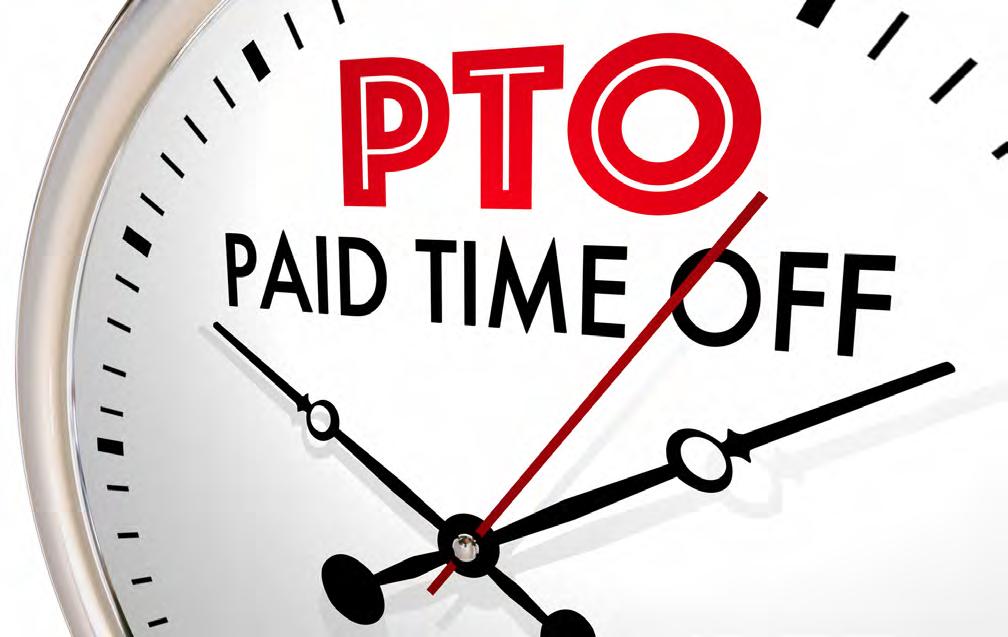
Strategies for implementing and managing unlimited
By Brett Farmiloe, Terkel
Brett Ungashick, CEO and CHRO, OutSail

Supply Unlimited PTO with Mandatory Minimums
We offer unlimited PTO at our company because we want to show employees we trust them to find a work-life balance that works for them.
Studies show that when we launch unlimited PTO, employees take less time off, so we mandate employees must take at least two days of leave per quarter.
We do not want employees getting burned out, so forcing some days off has helped us ensure the unlimited PTO model does not cut in the wrong direction.
HRIS & Payroll Excellence presented by HR.com MAY 2023 15 Submit Your Articles
2.
“Flex” PTO 3.
the Pros and Cons 4. Consider Emergency Time Off 5. Invest in Employees
Staying Flexible 6. Base PTO on Tenure 7.
Policy for
Smaller Staff 8. Create a Culture of Mutual Trust and Work-life Balance 9. Define Your Leave Policy to Avoid Confusion
In this article, nine human resources (HR) and business leaders share their strategies on offering paid time off (PTO) to employees. 1. Supply Unlimited PTO with Mandatory Minimums
Try Using
Weigh
by
Use a Leave-sharing
a
PTO policies
Try Using “Flex” PTO


Unlimited PTO is a backhanded tactic for employers to guilt employees into working more. The “unlimited” wording is clever branding for the company to seem generous, but in reality, unlimited PTO often makes people feel anxious and awkward about requesting time off.
Companies should clearly define their vacation policy expectations. We have implemented an ethical version of “Unlimited” PTO that we call “Flex” PTO—it is unusual, but everyone loves it.
People get a base allowance of PTO for holidays and sick days. Our company calendar officially follows standard U.S. holidays, but people can use their days off on any day they choose. Do not celebrate Christmas? No problem—you can work that day and take another day off instead.
We allow people to earn additional PTO and they can take an extended vacation. If you work all week and put in an extra full day on Saturday, you can add that to your PTO balance for a holiday in the future.
Weigh the Pros and Cons
We believe that a set number of PTO days is more structured and manageable. In addition, unlimited PTO can lead to some employees taking advantage of the policy by taking more days off than they need.
However, we offer generous PTO policies so that our employees can take time off without worrying. Overall, unlimited PTO can be beneficial for some businesses, but it is important to weigh the pros and cons of an unlimited PTO policy before implementing it in your business.
HRIS & Payroll Excellence presented by HR.com MAY 2023 16 Submit Your Articles
Justin Pincar, Co-Founder and CTO, Achievable
Unlimited PTO: 9 Businesses Share Their Stance
Preston Powell, CEO, Webserv
Consider Emergency Time Off

We do not offer unlimited PTO in our business. As we have a relatively small crew, we must be sure about who is on the schedule. Missing team members can have a negative impact on the business, and we must be ready to react when it is necessary.
While all team members can multitask, no one can do everything and we cannot take the chance of an important task going undone because a team member has taken the day off.
In place of unlimited PTO, each employee has eight hours of emergency time off per month. This time is for emergencies only, but if the staff does not apply this time during the month, we pay the remaining balance at the normal overtime rate.

Invest in Employees by Staying Flexible
Flexibility means letting employees take rest days whenever they see fit. One way to enforce it is by offering an unlimited PTO where they can take work breaks without being forced to return to work because of limited vacation allocation.
This allows them to have enough personal time or recover from sickness in case they run out of their standard sick leave credits. Our company provides unlimited PTO or flexible leave credits because we want to show our employees that we trust them with their time.
This gives them the impression that we value their experience and makes them more passionate about working for the company in the long run. Unlimited PTO gives employees a chance to spend time with their families or on other important things that promote work-life balance.
HRIS & Payroll Excellence presented by HR.com MAY 2023 17 Submit Your Articles
Andrew Pierce, Founder, Real Estate Holding Company
Unlimited PTO: 9 Businesses Share Their Stance
Riva Jeane May Caburog, PR and Media Coordinator, Nadrich & Cohen
Derek Bruce, Senior Director, Newcastle First Aid Courses

Base PTO on Tenure
At our company, we do not offer unlimited PTO. We believe that a set amount of PTO provides structure and clarity for our employees, and it helps us manage resources more effectively. Our employees receive a generous amount of PTO based on their level and tenure with the company, and we encourage them to use it to rest, recharge, and pursue their personal interests.
We also believe in transparency and fairness for PTO. The PTO policies are clear in our employee handbook, and we communicate any updates or changes in a timely manner. We also encourage our managers to be flexible and accommodating in scheduling PTO requests, as we understand the importance of work-life balance for our employees.
Overall, while we understand the appeal of unlimited PTO, we believe that a structured and transparent PTO policy is the best fit for our company and our workforce.
Use a Leave-sharing Policy for a Smaller Staff
Unlimited PTO can be a good way of increasing flexibility within a company’s workforce. We can eliminate the potential for misuse and unequal distribution of entitled leaves with proper guidelines in place.
Jonathan Merry, Founder, Moneyzine

It is also an excellent strategy for attracting top talents in search of flexible work. However, our company simply cannot follow this trend as of now. With fewer than 15 employees, our company will have a tough time managing its workload if we offer unlimited PTO.
For instance, having half of our workforce on leave for more than a week would mean that our content volume will go down by 35%. Also, even if we follow the trend in most companies in the UK that offer 32 days of PTO and call it “Unlimited PTO,” that is still time we simply could not afford to give.
Instead, we implemented a leave-sharing and leave-pooling policy as an alternative. Unlimited PTO is still a leave policy that we might implement should we grow in the future.
HRIS & Payroll Excellence presented by HR.com MAY 2023 18 Submit Your Articles
Unlimited PTO: 9 Businesses Share Their Stance
Create a Culture of Mutual Trust and Work-life Balance
Our company’s unlimited PTO policy stems from creating a company culture of mutual trust and work-life balance. We always communicate to our employees that taking sufficient time off is favorable for them and the company.
It is about minimizing workplace burnout and knowing that using their PTOs does not translate to being lazy, selfish, or incompetent to their colleagues. It is a great indicator of whether your company respects employees’ decisions to make the most of their PTOs without disrupting the workflow or operations within the organization.



Define Your Leave Policy to Avoid Confusion
We currently do not offer unlimited PTO at our company. We believe that having a defined policy and structure in place for vacation days allows employees to plan their time off more efficiently, ensuring both job satisfaction and productivity.
By offering set amounts of days off per year, we can better manage vacation schedules across departments and teams.
Would you like to comment?
HRIS & Payroll Excellence presented by HR.com MAY 2023 19 Submit Your Articles
Grant Polachek, Head of Branding, SquadHelp
Unlimited PTO: 9 Businesses Share Their Stance
Michael Dadashi, CEO, Infinite Recovery
Brett Farmiloe is the Founder and CEO – and currently CHRO - of Terkel. Brett is an SHRM influencer and has also been a keynote speaker at several state SHRM conferences around the topic of employee engagement.
HRCI® & SHRM® CERTIFICATION PREP COURSES
GROUP RATES AVAILABLE
For HR Professionals
Show that management values the importance of the HR function, and has a commitment to development and improvement of HR staff.
Ensure that each person in your HR department has a standard and consistent understanding of policies, procedures, and regulations.
Place your HR team in a certification program as a rewarding team building achievement.
For Your Organization
Certified HR professionals help companies avoid risk by understanding compliance, laws, and regulations to properly manage your workforce.
HR Professionals lead employee engagement and development programs saving the company money through lower turnover and greater productivity and engagement.
A skilled HR professional can track important KPIs for the organization to make a major impact on strategic decisions and objectives, including: succession planning, staffing, and forecasting.
HR.com/prepcourse CALL TODAY TO FIND OUT MORE 1.877.472.6648 ext. 3
sales@hr.com
|
Why Certification is the Best Choice:
1 Less expensive than a masters or PhD program, and very manageable to prepare with flexible study options.
2. Recertification - ensures HR professionals continue to be up to speed on the latest legislation and best practices
3. Recognized, Industry benchmark, held by 500,000+ HR Professionals
Group Rate Options
We offer group rates for teams of 5+ or more for our regularly scheduled PHR/SPHR/ SHRM or aPHR courses.
For groups of 12+, we can design a more customized experience that meets your organization’s needs. You can have scheduling flexibility in terms of the days, times, and overall length of the course.
Groups rates for HRCI exams are also available as an add-on.
All group purchases come with 1 year of HR Prime membership for each attendee to gain the tools and updates needed to stay informed and compliant.
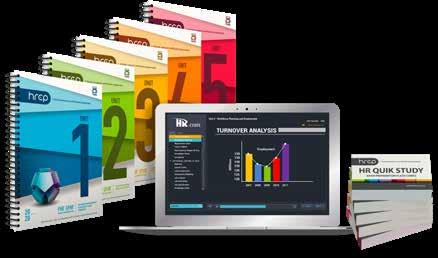
CALL TODAY TO FIND OUT MORE 1.877.472.6648 ext. 3 | sales@hr.com | HR.com/prepcourse
1 2 3
Payroll Equity: Left Out And Leaving
How systematic pay and promotion discrimination against women damages the workplace
By Jaclyn Margolis, Pepperdine Graziadio Business School

Recently,Goldman Sachs was ordered to pay a $215 million discrimination settlement to former and current female employees. At the heart of the case were claims female employees were paid less and promoted less often than their male counterparts.
The lawsuit alleged that “violations of its female employees’ rights” are based on “companywide policies and practices and are the result of unchecked gender bias that pervades Goldman Sachs’ corporate culture”, according to The Wall Street Journal
The fact that a venerable institution like Goldman Sachs was ordered to pay a settlement may be surprising to some. However, the reality is many companies have inequitable pay and promotion policies.
Although many forces can get in the way of fair policies, here are a few to consider:
1. Companies can reduce the likelihood of women advancing into management by having restrictive guidelines for promotions. Company policies can inadvertently hinder women’s promotions by perpetuating gender bias and inflexible workplace structures that prioritize masculine leadership traits. Rebecca Shambaugh provides a powerful example:
many companies require that open corporate board seats are filled by someone with CEO experience. However, because of the small number of CEO positions that have historically been filled by women, this requirement may automatically rule out many qualified women.
HRIS & Payroll Excellence presented by HR.com MAY 2023 22 Submit Your Articles
Top Pick
2. As another example, companies often use leadership competencies to evaluate potential candidates for promotion. Because the managers who develop the lists of leadership competencies are more commonly men than women, these lists tend to reflect what makes men successful. However, it often backfires when women try to adopt the same work style as men. For example, men are typically seen as confident when they act assertively, whereas women are often considered aggressive for the same behavior and face backlash. During performance reviews, managers often describe male employees using task words (e.g., analytical, competent, etc.) but use relational words (e.g., compassionate, energetic, etc.) for women. When evaluating candidates for promotion, task-related characteristics hold more weight.
3. Finally, good old-fashioned office politics can get in the way. Sucking up, backstabbing and credit stealing are the behaviors that drive employees crazy and eventually out the door. According to a recent Pepperdine Graziadio poll, three in five office workers (59%) say it is likely that women and ethnic minorities are impacted by office politics more. Women are more likely than men to say office politics has caused them to leave an employer (29% vs. 19%).


Organizations can begin to move past these challenges by adopting qualification diversity, meaning that they should reconsider their leadership competencies and hiring/promotion guidelines to ensure they are not unintentionally skewed to favor men. Although this is easier said than done, the payoff can be huge. Research has shown that having gender diversity in leadership can benefit all, from the company culture to the bottom line.
Senior management should work to drive this change. According to the Pepperdine survey, one-third of employees say managers (33%) and senior management (32%) can affect the level of negative office politics and are best positioned to do something about it. To encourage fairness in promotions and pay, management can help develop meaningful changes to evaluation criteria, conduct regular pay equity audits, provide mentorship and leadership development programs, and foster a culture that values diversity and inclusion.
Goldman Sachs faced the cost of gender discrimination through its settlement, but the actual cost to the company does not end there. The price tag of gender discrimination is much larger, including the loss of talented employees, decreased productivity, damaged reputation, negative employee morale, and missed opportunities for innovation and growth.
HRIS & Payroll Excellence presented by HR.com MAY 2023 23 Submit Your Articles
Payroll Equity: Left Out And Leaving
Jaclyn Margolis, Ph.D., is an Associate Professor of Applied Behavioral Science at Pepperdine Graziadio Business School. Would
you like to comment?
Digital Transformation: Top 5 Tips For HR

You know digital transformation is important, but how do you implement it?
By Zachary Amos, ReHack
What company isn’t incorporating more digital assets these days? From software to robots, businesses are getting imaginative on how technology can improve bottom lines and make the workforce enjoy being at the job more. The name of the game is automation and efficiency.
What Is Digital Transformation, and Why Does HR Need it?
Since HR manages everything from onboarding to health insurance documentation, how they organize information impacts everyone. If HR adopts digital tools, the rest of the company must do so as well.
HRIS & Payroll Excellence presented by HR.com MAY 2023 24 Submit Your Articles
HR sets the precedent for how workflows look and where to locate stored data.
HR digital transformation is automating and digitizing operations to focus more on data-driven decision-making and oversight. Every company in each sector is moving to digital resources for a good reason — the benefits are among some of the most notable workplace enhancements in history.
For too long, departments have relied on antiquated methods that result in lost data and time-consuming record-keeping. Digital transformation makes HR more dependable and, therefore, more reliable to every employee in the building.
1. Only Improve What’s Necessary
Using process discovery, departments can discover what ineffective, inefficient and time-consuming processes lower workforce quality of life and company betterment and find tools to solve those
pain points. Here are some helpful questions HR teams can ask when beginning their audit:
● Would we benefit from a centralized hub where all data is collected?
● What are the most frustrating processes within the department and for those interacting with us?
● Do we have tech-savvy team members that can assist with the transition, or will there need to be additional resources and funding for training programs?
● What are the priorities for choosing providers and vendors? Is it financial, or is it based on service offerings?
Implementing technology for the sake of it isn’t reason enough to download and train on new software. It might overcomplicate a simple procedure, so HR departments must be discerning and implement tech that aligns with business goals. The process also

HRIS & Payroll Excellence presented by HR.com MAY 2023 25 Submit Your Articles
Digital Transformation: Top 5 Tips For HR
encompasses reevaluating existing digital tools and considering how well they function. Are there better alternatives out there?
2. Always Consider Stakeholder Opinions
Stakeholders are investing in the products, and HR departments must convince them the investment will bring a return. Funding is void if the department doesn’t provide a solid justification. Though that may seem like a failure, it’s an insight into what will make an impact — if a department struggles to justify why it needs software to replace filing cabinets, is it necessary? Since their money is on the line, they will be more swift and judicious on the essentials.
However, this also puts pressure on HR teams to rally solid defenses for tools and distill and clarify those needs to those outside the HR world. Only 41% of companies believe in the ROI of training programs, so proving the value of digital transformation and fronting as many resources as possible is essential for buy-in.
3. Find Ways to Manage the Transition
Digital transformation could be highly disruptive to daily operations among training, installation and adoption. When HR departments carry such essential roles in a company’s flow, they must plan intermediary solutions to these interruptions. Planning these solutions should happen before any part of the digital transformation process.
4. Acclimate to Modern Data Management
HR departments have numerous data points on employees and the inner workings of businesses. That data must remain safe and accessible, but it often sits unused. Companies can leverage data to gain more insights about managing employees better or save companies money.
However, importing data into systems with AI, for example, could prove how many employees take on health insurance or call out sick. How does this impact company profits or efficiency?
Whatever the company wants to gain from that data, collecting that info and using it should be transparent to employees. HR departments may have to collaborate with IT teams to ensure it’s safe from cyber threats and that they’re not collecting more data than they need.
5. Never Stop Improving
Digital transformation may feel like a large-scale one-and-done business improvement. Using the technology will be a constant assessment of usefulness. Everyone using it will have suggestions and thoughts on user interfaces and experience. These are all invaluable tidbits that can inform future decisions.
The bulk of the improvements and installation of programs and ideas may happen simultaneously, but seeking new and better tools is a constant state of being. Technology will always get better, faster, more capable and maybe cheaper. Settling for what you have should only be a temporary phase.
Making HR More Tech-Forward
Digital transformation has the chance to bring HR, and therefore entire companies, into a streamlined future of data management. Recruitment, record-filing, and information acquisition become more straightforward and faster when programs and other tech resources can automate and retrieve data with a few clicks.
Zachary Amos is a tech writer with a special interest in HR technology, automation, and cybersecurity. He is the Features Editor at ReHack
Would you like to comment?

HRIS & Payroll Excellence presented by HR.com MAY 2023 26 Submit Your Articles
Digital Transformation: Top 5 Tips For HR
Navigating Pay Equity, Pay Transparency, and Pay Range Disclosure Regulations
By Excellence ePublications Team
The recent legal and social climate has magnified the importance of pay equity, even though it may have slid down the priority list for many organizations over the past few years. The current trend toward pay transparency laws adds even more pressure on employers to reassess their compensation practices.

Check out the upcoming webcast that will offer a comprehensive exploration of pay transparency trends and regulations and insights into federal and state pay equity mandates. We will present a roadmap that explores the concepts of pay fairness, transparency, and the importance of disclosing pay ranges to promote a diverse and inclusive workplace. The webcast will include a state-by-state update on specific regulations that require the inclusion of pay ranges in job postings.
Additionally, this webcast will provide context for navigating the existing legal landscape, and addressing equity considerations. We will stress the importance of equipping recruiters, managers, and leaders with the necessary tools and knowledge to adopt a fresh perspective on compensation and its role within the workplace to help employers to promote an inclusive and equitable work environment that embraces transparency in pay practices.
Learning Objectives:
● Explore the history, fundamentals, and spirit of pay transparency laws and their significance to employers.
● Understand the statespecific pay equity and pay transparency mandates and how to comply with various pay equity laws.
● Review state and local requirements for including pay ranges in job postings
and how to comply with them.
● Evaluate the impact of pay transparency on employee satisfaction, engagement, and organizational performance.
● Learn effective strategies for implementing pay transparency initiatives, including disclosing pay ranges to employees.
Register free for the webcast here.
Would you like to comment?
HRIS & Payroll Excellence presented by HR.com MAY 2023 27 Submit Your Articles
TOP PICK
FMLA: How Employers Can Avoid Common Mistakes
Balancing work and health
By David Setzkorn, HUB International
It’s all too easy for human resource professionals to get the ins and outs of the Family and Medical Leave Act (FMLA) wrong.
Figuring out where company leave policies intersect with FMLA provisions – or not – can be a challenge to HR managers, general managers and employees themselves. Mistakes are common and can be costly.
Take the 2019 Massachusetts Supreme Court decision finding an employer liable for $1.3 million in damages for a retaliatory termination of an employee after he took a trip to Mexico while on leave. The trip had been scheduled well in advance of the surgery which had necessitated the leave; his activities on vacation aligned with medical recommendations and FMLA leave requirements. The case was a warning against knee-jerk decisions in response to perceived FMLA abuses.
FMLA administrators have found that three particular areas are most troublesome to employers: notifications and communications between employers and employees; recertifications; and ensuring employees’ rights to leave under FMLA are protected.
Understand Eligibility Requirements, for Starters
HR and general managers should be trained in the provisos of the FMLA. That starts with knowing the four eligibility requirements for employers and employees. Additionally, understanding the common mistakes can go a long way toward avoiding them.
HRIS & Payroll Excellence presented by HR.com MAY 2023 28 Submit Your Articles
● Employer eligibility requirements: Eligible employers must have 50 or more employees working each day for at least 20 calendar weeks over the previous 12 months or current calendar year at the time a leave is requested. Employers on the cusp can move in and out of eligibility, so they should review this every time a potential leave request is made. Smaller employers that are owned or managed by a central company must use the integrated employer test to determine if they collectively share enough common interests to be considered one employer for eligibility purposes.
● Three rules for employee eligibility:
First, the individual must work a minimum of 12 calendar months, not consecutive, but over a seven-year time frame. This means accurate record-keeping for seasonal employees or those who are re-hired.
In the 12 months prior to making the leave request, an employee must work a minimum of 1,250 hours. Part- or full-time status is not relevant.
The work location must have 50 employees within a 75-mile radius. This has become more complicated with remote work trends. For remote workers, the rule shifts to the location where their work is assigned. For those without a fixed worksite, the rule is based on which location they report to. Remote managers? Where they report to or where work is assigned from site location determinants.
Avoid Most Common Mistakes
A lot of mistakes can be made in determining FMLA eligibility, but here are four of the greatest concerns:
1 Eligibility requirements – specifically the 50/75 rule – can’t be waived, altered, ignored or eliminated by the employer to be more generous or restrictive.
2. The FMLA clock does not restart for employees who leave or come back. Regulations say nothing about accounting for employment breaks. The rules require employers to look at the 12 months preceding the leave request.
3 An employee’s status as a part-timer does not mean he or she is ineligible for FMLA.
4 It’s easy to mishandle eligibility requirements for temporary employees that are then hired as regular employees. In this instance, the joint-employer rule comes into play: their joint service hours and months accrued as a temp must be counted toward FMLA eligibility once they are hired.
The FMLA is a boon to workers as a way to balance the often-warring demands of work and health. But it’s also complex, making it a challenge for employers to administer correctly. Organizations will be well-served by instituting a sound FMLA policy that outlines everything from notice requirements and medical certification rules to how it aligns with company leave policies – and training managers regularly on the basics.
David Setzkorn is Senior Vice President and National Practice Leader for Absence Management at the global Top 5 insurance brokerage Hub International out of Arizona. He has over 10 years of experience working in the carrier space as a subject matter expert on Leave Administration. His experience includes consultation and development of Absence Management and ADA programs with clients from implementation, training and ongoing compliance with state and federal regulations as well as product and program development for carriers. He is a nationally recognized speaker working with organizations such as DMEC, IBI, SHRM and ISCEBS to deliver training and content regarding FMLA, ADAAA, Paid Family Medical Leave, and state and municipal leave programs.
Would you like to comment?

HRIS & Payroll Excellence presented by HR.com MAY 2023 29 Submit Your Articles FMLA: How Employers Can Avoid Common Mistakes
More than a decade later, Goldman Sachs, one of the world’s largest investment banks, finally agreed that it discriminated against its women employees in pay, performance evaluations, and promotions. The Wall Street bank’s $215mn settlement should be a lesson to other companies who overlook gender and equity discrimination happening in their workplaces.
In an exclusive interview with HR.com, Olivia Cicchini, Legal Specialist at Peninsula Canada, touches upon what employers must do to maintain compliance with pay and gender equity and how to identify instances of discrimination and promote a culture of equality in the workplace, among others.

‘Companies Must Ensure Their Pay Practices Are Equitable And Transparent’
Q.Why do companies continue to discriminate between genders in pay despite stringent laws and regulations?
Olivia: Pay inequity is an issue because jobs typically held by women are often paid less than typical “male” jobs. This further contributes to the gender pay gap wherein women experience pay discrimination due to the nature of their work
Q.What additional legal measures can effectively eliminate pay inequity and gender discrimination in the workplace?
Olivia: Pay transparency and equity legislation have emerged as leading ways for employers to be publicly held accountable for their actions. Pay transparency laws aim to identify and address pay discrimination by placing obligations on companies to include information about pay in job ads, prohibiting questions about pay history from job applicants, and forcing larger organizations to produce annual pay transparency reports.
HRIS & Payroll Excellence presented by HR.com MAY 2023 30 Submit Your Articles
Straight Talk with HR.com
TOP PICK
Q&A with Olivia Cicchini, Legal Specialist at Peninsula Canada
Q.What should be the takeaways for organizations from the recent Goldman Sachs case?
Olivia: The main takeaway from this case is that all companies, regardless of size, must ensure compliance with applicable human rights and employment standards legislation when determining pay, performance evaluations, and growth opportunities.
Employers must ensure they are dishing out raises and promotions based on merit and experience, not sex, gender, or other potentially problematic grounds. For example, awarding additional benefits to employees who take fewer personal or vacation days during the year can be indirectly discriminatory toward women who may have taken time off to care for children or an elderly family member.
Q.How can employers proactively identify and address potential gender-based pay disparities in their organizations?
Olivia: To identify and address gender-based pay disparities, companies should ensure their pay practices are equitable and transparent, encourage female staff to negotiate their pay and ask for raises,
reassess their recruitment and hiring processes, confirm male employees are utilizing their annual vacation, and parental leave entitlements, and conduct frequent pay equity reviews and audits.
Q.What steps can human resources (HR) departments take to promote a culture of equality and prevent gender discrimination in the workplace?
Olivia: HR can adopt many of the above-noted practices. However, it must also consider putting a diversity, equity, and inclusion committee and associated company policy in place, having more women in managerial and leadership positions, and providing frequent employee training on workplace violence, harassment (including sexual harassment), bullying, and ensuring staff returning from maternal and parental leave are placed in a comparable position with the same benefits and pay as before.
Q.What are some effective strategies for conducting pay equity audits and analyses?
Olivia: Before conducting a pay equity audit, employers must collect all necessary data, including a list of their employees’ sex/gender, salaries, job descriptions, benefit entitlements, etc. After the information has been gathered, the company should group the data into job classes comprised of positions with similar duties and pay to see which ones are considered predominately “female” or “male.”
This information can then be compared to see if wage gaps exist amongst traditionally female or male jobs. After identifying the gaps, the company can consult its diversity, equity, and inclusion committee to address the issues.
HRIS & Payroll Excellence presented by HR.com MAY 2023 31 Submit Your Articles
Straight Talk with HR.com
Would you like to comment?

ePublication EditorialCalendar2022 Checkoutthenewandupcoming themedHRtopicsinHRIS&Payroll Excellence. Check ePublications Editorial Calendar Here. Would you like to submit an article? | Write to us at ePubEditors@hr.com Submission Guidelines 1 Payroll Law and Compliance Jan 2023 2 Digital Transformation, Integrations and Automation in Payroll Feb 2023 3 Payroll Tech Mar 2023 4 The Future of Payroll Apr 2023 5 HR Tech Stack May 2023 6 Employee Self-service Functionalities Jun 2023
VIRTUAL EVENTS
VIRTUAL EVENTS & HR.COM WEBCASTS UPCOMING www.hr.com/upcoming_webcasts www.hr.com/virtualconferences View our Upcoming Webcasts Schedule and Register Today! View our Upcoming Virtual Conference Schedule and Register Today! 20 Minute Wellness Session to Get Your Day Started with Moon & Rune June 7, 2023 9:30 AM - 9:50 AM ET REGISTER Transform Hiring with the Greatest Overlooked Tool June 20, 2023 12:00 PM - 1:00 PM ET REGISTER The Future of Learning Technologies June 21, 2023 REGISTER Employee Cannabis Use – Prevalence, Implications and Solutions June 6, 2023 11:00 AM - 12:00 PM ET REGISTER Tackling Threats to Employee Financial Well-being: How and Why it’s Critical to your Business Success June 8, 2023 12:00 PM - 1:00 PM ET REGISTER The Future of Employee Well-being June 7-8, 2023 REGISTER
The State of High-volume and Hourly Hiring June 20, 2023 REGISTER
WEBCASTS
WEBCASTS
Thank you for partnering with us!
Paychex, Inc. (Nasdaq: PAYX) is a leading provider of integrated human capital management software solutions for human resources, payroll, benefits, and insurance services.


Designing better ways to work by providing cutting-edge products and exceptional experiences within HR, Talent, Time Management, Benefits and Payroll.


Global employment partner Omnipresent provides techenabled business solutions combined with personalized expertise to support hiring people globally.

Paycom (NYSE:PAYC) offers cloudbased human capital management software to help businesses streamline employment processes, from recruitment to retirement. With a robust suite of products including payroll, time and labor management.
LEARN MORE
empowers organizations to effectively respond to changing priorities. Use powerful automation, comprehensive analytics, and flexible workflows to ensure your global workforce can adapt and thrive.
LEARN MORE
US
THANK YOU
MORE PARTNER WITH
LEARN
MORE
LEARN
MORE
LEARN

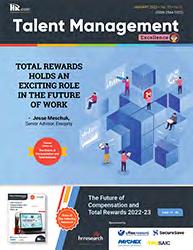






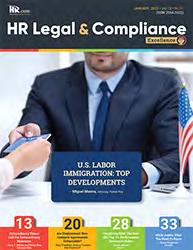


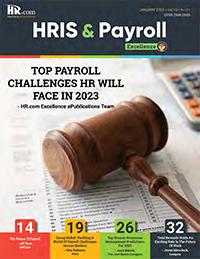
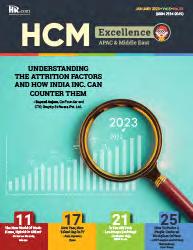
Publications 13 Targeted Publications to Reach Your Audience Informing, Educating, Enlightening and Assisting HR professionals in their personal and professional development, the Excellence series offers high-quality content through the publications! Like to submit an article? Use our online submission form or for more information go to www.hr.com/ExcellencePublications

For more information: Phone: 1.877.472.6648 | Email: ePubeditors@hr.com | www.HR.com/epubs HRIS & Payroll Excellence May 2023
























 Dave Ulrich
Dave Ulrich



















































